Taco’s System M air-to-water heat pump is meeting the demand for higher efficiencies and the inevitability of beneficial electrification. Coming off the heels of its 2023 AHR Expo Innovation Award for Sustainable Solutions, Taco’s System M’s air-to-water heat pump system is making waves in the field as well. “You really want to come out with Read more
Taco System M air-to-water heat pump
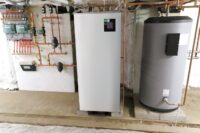
Taco’s System M air-to-water heat pump is meeting the demand for higher efficiencies and the inevitability of beneficial electrification.
Coming off the heels of its 2023 AHR Expo Innovation Award for Sustainable Solutions, Taco’s System M’s air-to-water heat pump system is making waves in the field as well. “You really want to come out with innovative products that provide enhanced value in the marketplace. The System M is just that—the award is a great validation for the entire Taco R&D team,” says Mark Chaffee, Vice President, Product Management, Taco.
Why did Taco, a leading manufacturer of high efficiency indoor heating, cooling, and plumbing comfort systems, dive into the heat pump market? “We saw the trends in electrification coming so we wanted to include hydronically-based heat pumps to our line of already reliable comfort systems products. The last thing we need is more distributed refrigerant systems, if we are going fossil-fuel free and non-CO2 producing equipment, why not do it with water—with a GWP of zero,” says Chaffee.
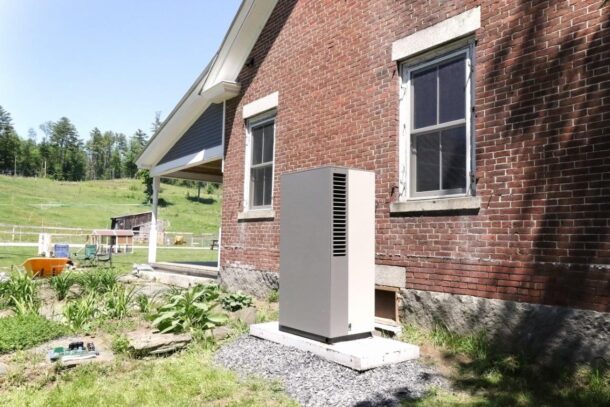
The System M outdoor unit
System M responds to increasing HVAC electrification trends while providing superior comfort, high efficiency and ease of installation. With just six pipe connections, the heat pump provides up to 44,000 BTUh, 3½ tons of cooling, and a max COP of more than four.
The technology is solar PV and smart grid ready, designed specifically for a low carbon society and built with the knowledge that water is the most efficient and natural energy transfer medium on the planet.
Rural Application
In a single-family, older brick farmhouse in Plainfield, a small town located in north central Vermont, the System M was piloted and installed in February 2020. Thanks to the ingenuity of Rick and Peter Lloyd of Lloyd Home Services, Emerson-Swan and Taco, another satisfied customer was converted to a non-fossil fuel powered heating and colling system with full PV integration.
But, because of Vermont’s extreme cold winter temperatures, the installation did not come without its challenges. “Here in Vermont, there are old homes with little to no insulation in many parts, such as this application before renovations. Though air sealing and spray foam upgrades were added to the home, the seasonal winter temps do offer challenges to heat pump systems holding comfort levels without a back-up or supplemental heat source,” says Rick Lloyd, service manager.
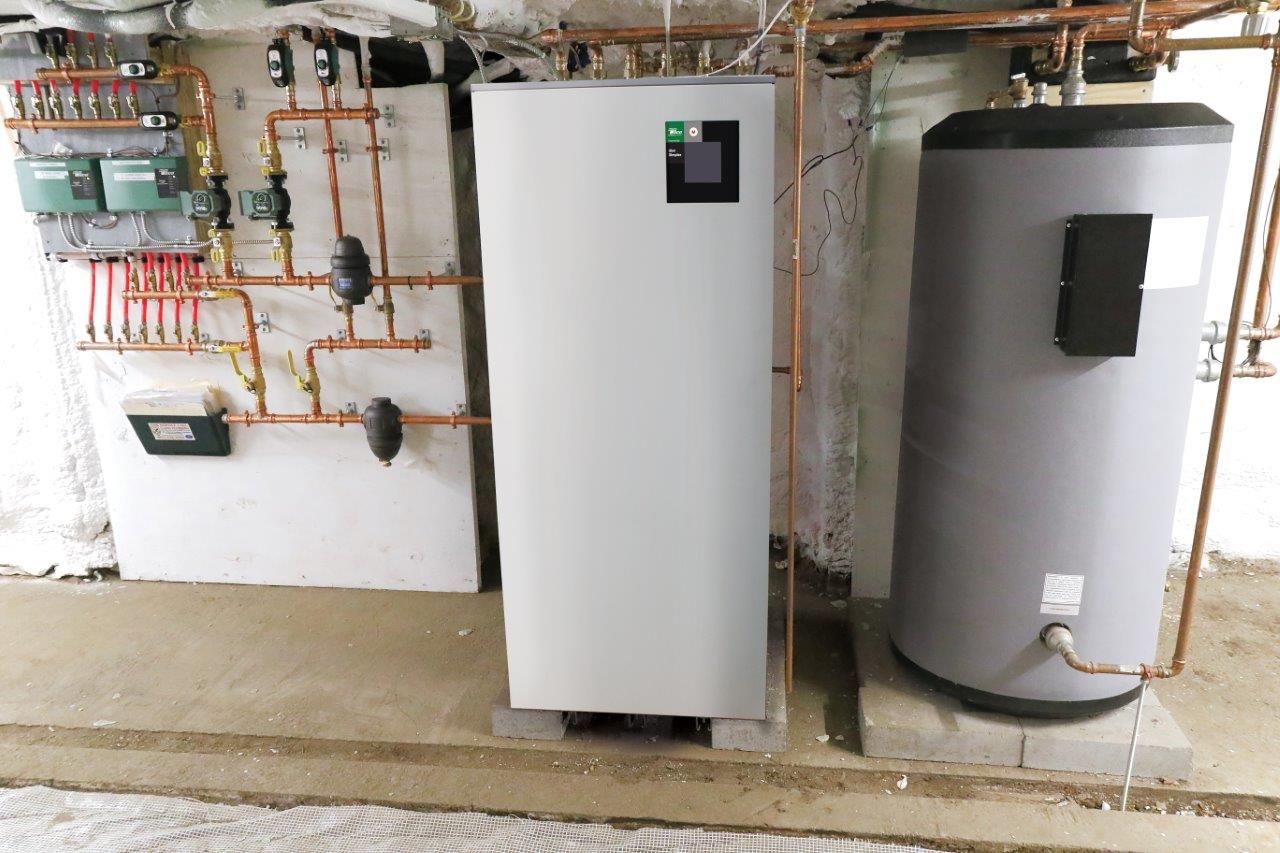
The mechanical room at the Vermont farmhouse
As was the case with Plainfield home, a homeowner’s insulation mistakes, and outdoor temperatures dipping to -20F for consecutive days, concern for supplemental heat was valid, and a back-up pellet boiler was part of the design. When the temperature outside dropped, the back-up pellet boiler kicked-in to provide a secondary natural source of heating. Balancing the two heat generation systems provided the ultimate efficiency throughout the year for a first of its kind fossil-fuel free instalation in Vermont.
There were some early assumptions on BTU heat loss for the historic building that turned out to not be true, says Lloyd. “The proper BTU heat loss survey and calculation in any high efficiency equipment upgrade is important, especially one where the hot and cold extremes are as wide as here in Vermont. As a company we strive to ensure any work—whether a system upgrade or a repair we do in association with heating or cooling—meets or exceeds the desired results,” says Lloyd.
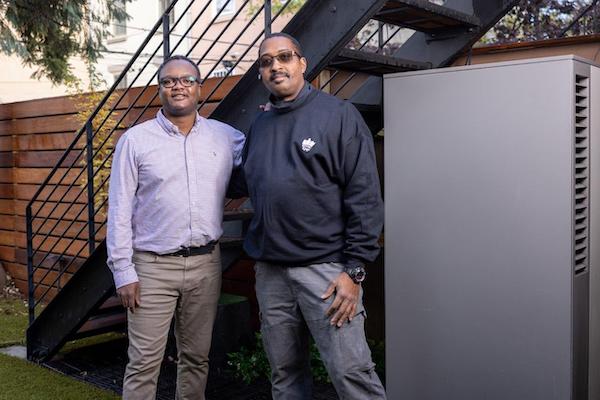
Chester Birchwood (r), owner, HVAC KINGS LLC, stands with the homeowner next to the exterior System M unit.
Because this particular example featured extreme frigid temperatures and excessive summer heat inside the brick house, coupled with inconsistant insulation, the team didn’t realize how much harder we had to work on this particular project, recalls Lloyd. However, “the System M package is well engineered and designed and made to attach easily to system piping, and because this was a 2020 pilot program, this particular system was closely monitored by Taco, and they were able to do most adjustments to the system remotely through the app, as needed to dial in the optimal performance,” says Lloyd.
“I will tell you this, if we’re talking a newly-built or well-insulated, slab home, the System M is definitely the cat’s meow,” says Lloyd. And, says Lloyd, the homeowner is extremely satisfied with the cooling of the home in the summer months using a hydronic-based system.
Big Apple Installation
To the south, a homeowner in Brooklyn, N.Y.—who was an early adopter of sustainable practices—purchased an old home in 2019 and quickly began demo work to gut the home prior to what would become a thorough renovation—removing layers of linoleum and vinyl flooring, and essentially all plumbing and wiring. As the work progressed, they began to specify high-performance windows and ample blown-in cellulose insulation. The home included mostly radiant floors and some in-floor convectors for supplemental perimeter “hydro-air” heat.
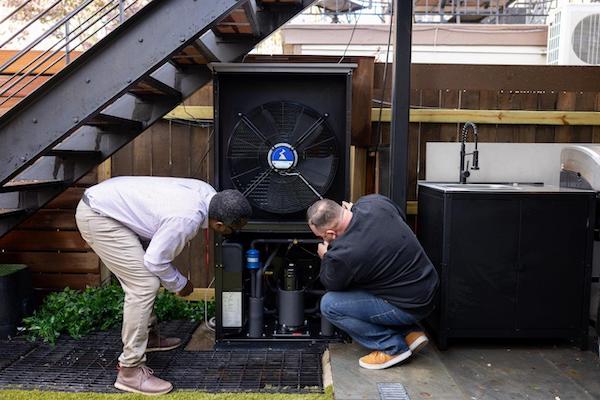
The homeowner called many New York City-area HVAC companies; however they were reluctant to move beyond their comfort work zone, and none were quick to accept the request to install an air-to-water heat pump system, like the System M. Eventually, calls and referrals led to Chester Birchwood, owner, HVAC KINGS LLC, who ultimately became the installation engineer.
Birchwood, in addition to installing a 3.9 Kw solar PV array atop the home, also installed the System M for cooling, heating and domestic hot water. “I’ve become a big fan of the System M, and its viability for residential installations nationwide,” says Birchwood.
The Efficient Choice
The System M technology is solar PV and smart grid ready, designed specifically for a low carbon society and built with the knowledge that water is the most efficient and natural energy transfer medium on the planet. “Water has a global warming potential of zero. The System M offers resiliency, higher efficiencies and lower long-term operating costs,” says Chaffee.
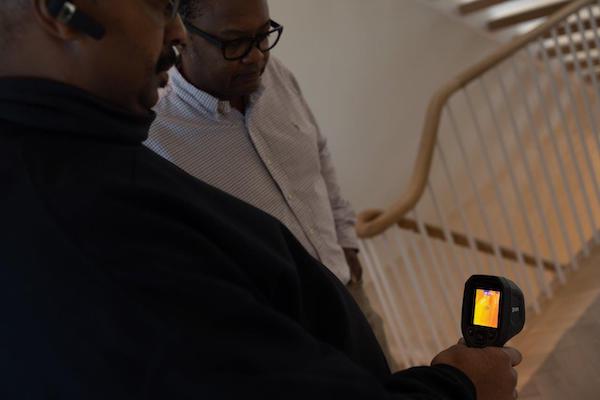
Chester Birchwood use an infrared camera to examine operation of the radiant floor system.
The outdoor portion of the heat pump (monobloc) features advanced inverter technology, a variable speed fan and quiet operation. The indoor HydroBox unit contains an integrated buffer tank, simplified wiring hub, user interface with smartphone app control, and a high-efficiency, dual-ECM pump piping module. The modular design provides turnkey functionality and reduces installation time. “This cuts installation time in half, and gives contractors more confidence that they can do it,” says Chaffee.
